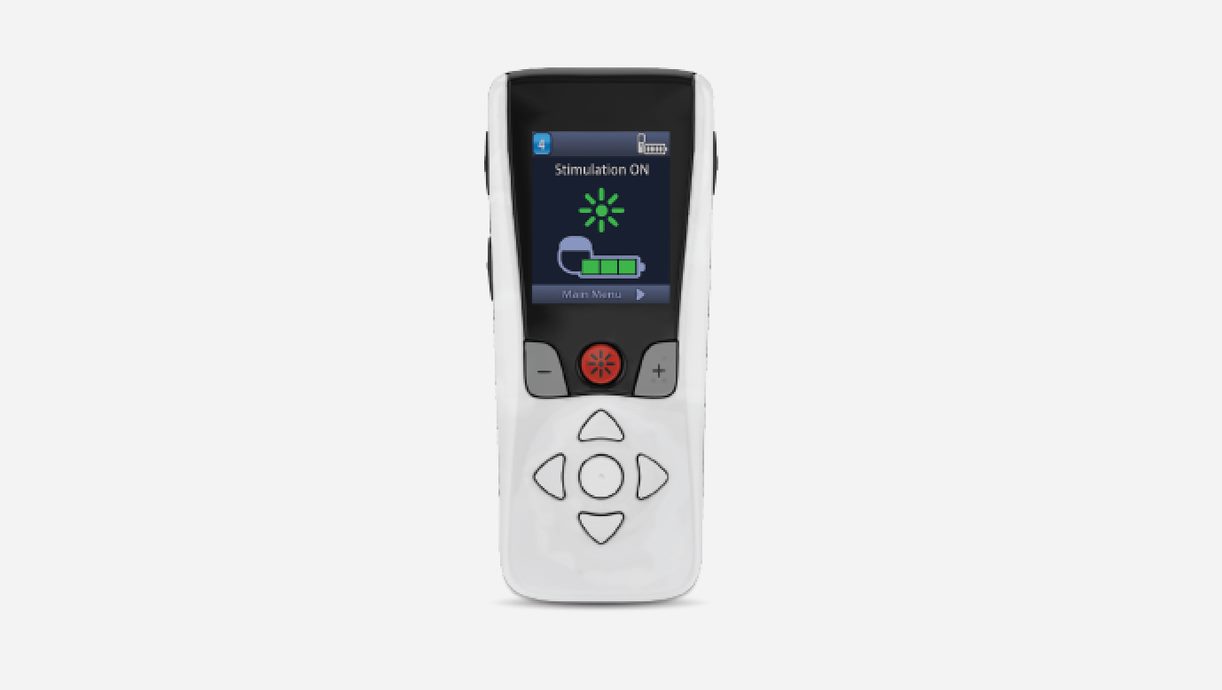INDICATION FOR USE:
The Boston Scientific Vercise™ PC, Vercise Gevia™, Vercise Genus™ Deep Brain Stimulation Systems are indicated for use in:
- Bilateral stimulation of the subthalamic nucleus (STN) as an adjunctive therapy in reducing some of the symptoms of moderate to advanced levodopa-responsive Parkinson’s disease (PD) that are not adequately controlled with medication.
- Bilateral stimulation of the internal globus pallidus (GPi) as an adjunctive therapy in reducing some of the symptoms of advanced levodopa-responsive Parkinson’s disease (PD) that are not adequately controlled with medication.
- Unilateral thalamic stimulation of the ventral intermediate nucleus (VIM) is indicated for the suppression of tremor in the upper extremity. The system is intended for use in patients who are diagnosed with essential tremor or parkinsonian tremor not adequately controlled by medications and where the tremor constitutes a significant functional disability.
- Bilateral stimulation of the ventral intermediate nucleus (VIM) of the thalamus for the suppression of disabling upper extremity tremor in adult essential tremor patients whose tremor is not adequately controlled by medications and where the tremor constitutes a significant functional disability.
The Boston Scientific Vercise Deep Brain Stimulation System is indicated for use in:
- Bilateral stimulation of the subthalamic nucleus (STN) as an adjunctive therapy in reducing some of the symptoms of moderate to advanced levodopa-responsive Parkinson’s disease (PD) that are not adequately controlled with medication.
CONTRAINDICATIONS: The Boston Scientific Deep Brain Stimulation (DBS) Systems are not recommended for patients who will be exposed to the following procedures: Diathermy as either a treatment for a medical condition or as part of a surgical procedure, Electroconvulsive Therapy (ECT) and Transcranial Magnetic Stimulation (TMS). The safety of these therapies in patients implanted with the Boston Scientific DBS System has not been established. Patients implanted with Boston Scientific DBS Systems without ImageReady™ MRI Technology should not be exposed to Magnetic Resonance Imaging (MRI). Patients implanted with the Vercise Gevia or Vercise Genus or Vercise Genus Mixed System with M8 Adapter or Vercise DBS Lead-Only System (before Stimulator is implanted) with ImageReady MRI Technology are Full Body MR Conditional only when exposed to the MRI environment under the specific conditions defined in ImageReady MRI Guidelines for Boston Scientific DBS Systems. Boston Scientific DBS Systems are not recommended for patients who are unable to operate the system or are poor surgical candidates or who experience unsuccessful test stimulation.
WARNINGS: Unauthorized modification to the medical devices is prohibited. You should not be exposed to high stimulation levels. High level of stimulation may damage brain tissue. Patients implanted with a Boston Scientific DBS System may be at risk for intracranial hemorrhages (bleeding in the brain) during DBS lead placement. Strong electromagnetic fields, such as power generators, security screeners or theft detection systems, can potentially turn the stimulator off, or cause unpredictable changes in stimulation. The system should not be charged while sleeping. If you notice new onset or worsening depression, changes in mood or behavior or impulse control, or have thoughts of suicide contact your physician or emergency services immediately. Chemical burns may result if the Stimulator housing is ruptured or pierced. The Boston Scientific DBS Systems may interfere with the operation of implanted stimulation devices, such as cardiac pacemakers, implanted cardioverter defibrillators, or medication delivery pumps. Patients should operate motorized vehicles or potentially dangerous machinery with caution. It is unknown if the device may hurt an unborn baby. Your doctor may be able to provide additional information on the Boston Scientific DBS Systems. For complete indications for use, contraindications, warnings, precautions, and side effects, see DBSandME.com or call 833-DBS-INFO or 833-327-4636.
CAUTION: U.S. Federal law restricts this device to sale by or on the order of a physician.

